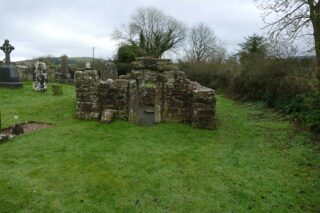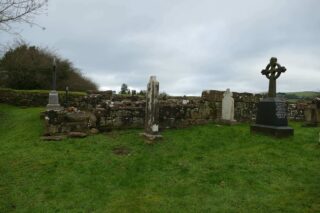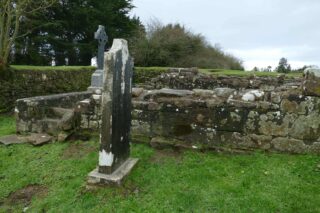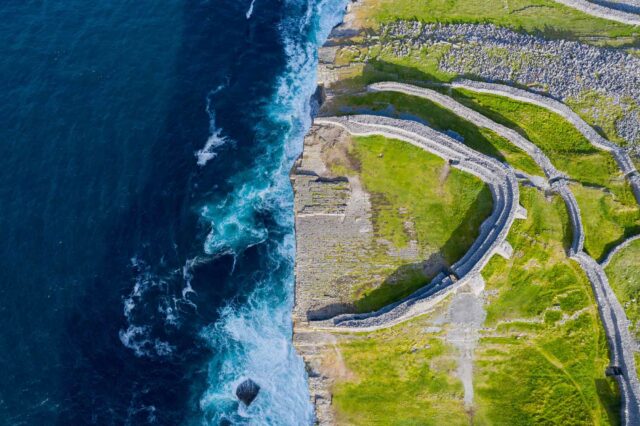Labbamolaga Ecclesiastical Enclosure
The Ecclesiastical Enclosure known as Saint Molaga’s Bed
Unguided sitesFógra
WARNING: It should be noted that these sites are unguided and a level of care and caution should be maintained during all stages of your visit. The Office Of Public Works (OPW) will not be held responsible for any damages, injuries, or losses that occur
Labbamolaga Ecclesiastical Enclosure
Labbamolaga is an early ecclesiastical enclosure originally comprised of four standing stones, a graveyard, two churches, a saint’s tomb, two cross-slabs, bullaun stones and a stone cross. Founded in the 7th century by St. Molaga, who introduced beekeeping to Ireland. St. Molaga also founded the monastery at Timoleague. It is believed after St. Molaga died in 664AD he was buried in the earlier of the two churches at Labbamolaga. Known as St. Molaga’s bed, the resting flagstone of sandstone covering his tomb is inscribed with spirals and parallel lines. The church, also known as the oratory, dates to the 9th/10th century, is rectangular in shape, and still has its antae (a support structure) at each end. Restoration in the stone work was carried out by the OPW, which was based on earlier sketches, and shows a heart shaped finial stone and projecting wings.
The second church stands north of the earlier church and was formerly the parish church. By 1615 it was noted to be in ruins, with original masonry on the south wall dating the church to the Romanesque period. Outside its north wall are two bullaun stones, said to be ‘cursing stones’, used in pagan times to curse ones enemy.
Excavations near the stone enclosure wall revealed two human remains, a young adult and child both oriented east to west. Only the dental remains of the child survived, with examinations of the teeth revealing that the child had a diet of breads, high in sugar, and tough meat.
The two cross-slabs are inscribed, with one incised with a simple cross and ‘IHS’ and ‘John O’ readable. The second inscription has the date ‘1744’ readable. The graveyard is mainly contained between the two churches, and the earliest headstone dates to 1714.
Visit Historic Environment Viewer for more information on Labbamolaga
Protect our Past - Click here to read about the importance of protecting our country’s unique heritage sites
This national monument is protected in accordance with the National Monuments Acts 1930 to 2014




